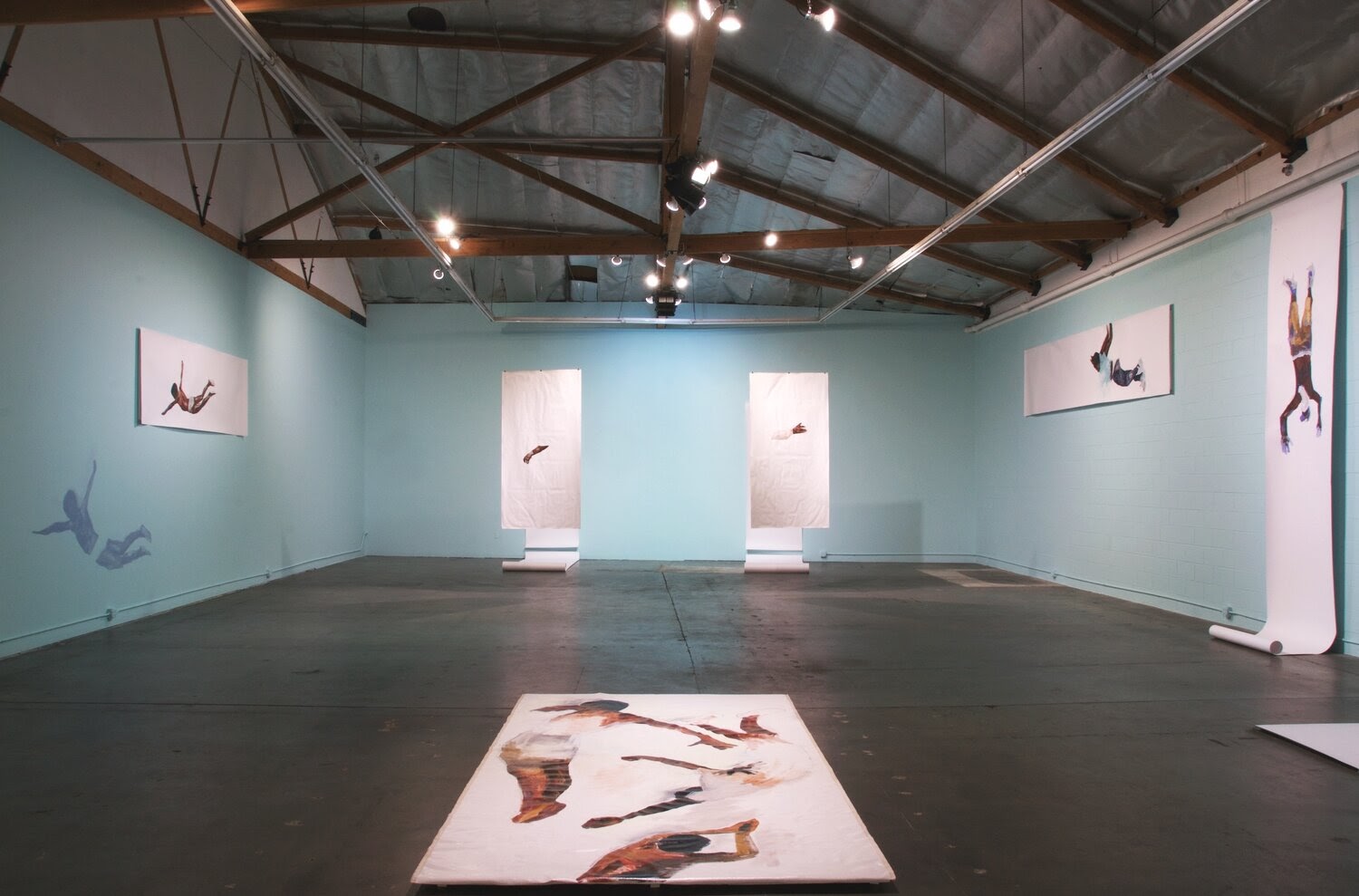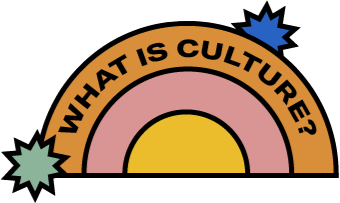

The Civic Media Fellows engage in collaboration with other artists, organizers and community members within their creative process. Some of them approach their work as an ongoing dialogue with members of their community about issues that matter to them. Others continually seek out collaborative partners for specific projects in which they need artists operating in different mediums. Terry Marshall, one of the fellows whose work is highlighted in greater depth in the Creating Futures section, also highlights collaboration as a process of creating networks that allow creators to remain small and agile. Instead of large institution building, he highlights the benefit of remaining flexible, quick and network-based. Within that framework, collaboration is ingrained in the process of how he sees the value of projects. For the fellows, collaboration not only results in new, multimedia projects, but also creative formations that enable sustained work for the purpose of communal action.
Hackathons for immigrant rights
Justino Mora is an immigrant rights organizer and software developer who has used the power of social media to mobilize the immigrant community, particularly youth, around collective action. This has involved collaborations with other young undocumented organizers and media creators and the creation of technological tools to facilitate civic participation and activism. He has also helped to challenge the idea of a conventional hackathon by bringing together organizers from beyond the tech sphere to contribute their ideas and solutions. In 2017, Mora organized the first hackathon led by immigrant and undocumented youth in which half of the participants to create tools for empowerment and healing. One aspect he noted that was really special about the hackathon was that about half of the attendees did not work in tech. He reflected:
One thing that I found upsetting about tech culture is that whenever I talk to some of my friends who are in politics or other non-tech fields they get immediately discouraged and intimidated by just talking about tech, or just by me inviting them to hackathons. I think that’s one major issue that the tech sector has and desperately needs to work on and get better at. In general, the tech sector has not been an inclusive space and systematically excludes and oppresses women and BIPOC. I want people to think differently about the tech world, and inviting friends to hackathons was one way for me to do that. The hackathon I organized in 2017 was really powerful because one of the things that my friends and I set to do was to ensure that it reflected the immigrant community not only in status, but also in demographics and nationalities. We had people from many different nationalities. People who were DACA recipients, undocumented, people who were legal permanent residents and also U.S. citizens. We had LGBTQ folks. We had people from many parts of the country - urban and suburban areas. And that was really powerful because I had never seen something like that happen in the past - a hackathon led by undocumented folks and supported by their allies.
Articulating grief and bearing witness through multimedia collaboration
Susu Attar is a multimedia artist whose work is focused on the idea of bearing witness and empathy. She has a communal practice that draws from cultural organizing and working with others to create projects that either directly or indirectly have to do with space making and place making. For her 2018 immersive experimental project Isthmus, she explored how images of embodied subjects circulate in a world that is media saturated and focused on repositioning media images of violence and turmoil through paint. The exhibit not only challenged the boundaries between photography and painting, but also explored how to bear witness and grieve with communities in turmoil. For Attar, part of this meant engaging with musicians Sandra Lawson-Ndu and Sheila Govindarajan for a performance within the exhibit space in which they engaged in expressions of loss and catharsis together through music. Commenting on her artistic process and the way she engaged in collaboration, Attar reflected:
The idea of Isthmus came out of a conversation I had with a huge room. It left me thinking about access to space, making space, sharing space and moving in space. I knew next that I wanted to take paint and will it to change stories of suffering into flight. I wanted to see—for myself—if paper and pigment could be enough, given the space, to bear witness and to make room for new possibilities. I wanted to see through the language of painting, through imagination, if the subjects could share the space but not need to be made the same. If they could be individuals, in different clusters, and in one community, all at once. I wanted to see if they could make new stories together.
![]()
In the process, I was overcome with a need to mourn for the subjects of the media images I was referencing. The human beings suffering the violence of police brutality—here, suffering violence of separating families seeking asylum—here, suffering the violence of war—from here. In my history, mourning has always been expressed communally. When I fall to my knees, a woman in my community comes and kneels in front of me, to be in it with me. If I wail, she wails with me. And we beat our chests like drums together.
I worked with musicians Sandra Lawson-Ndu and Sheila Govindarajan and we translated these sentiments into the language of music and movement. We took that language and wove it together to see if it could help us process our pain. The experimental music performance, Lament, was performed inside the Isthmus installation and we invited the community to share the space and be witness with us.

In the process, I was overcome with a need to mourn for the subjects of the media images I was referencing. The human beings suffering the violence of police brutality—here, suffering violence of separating families seeking asylum—here, suffering the violence of war—from here. In my history, mourning has always been expressed communally. When I fall to my knees, a woman in my community comes and kneels in front of me, to be in it with me. If I wail, she wails with me. And we beat our chests like drums together.
I worked with musicians Sandra Lawson-Ndu and Sheila Govindarajan and we translated these sentiments into the language of music and movement. We took that language and wove it together to see if it could help us process our pain. The experimental music performance, Lament, was performed inside the Isthmus installation and we invited the community to share the space and be witness with us.
Co-creation centered around healing and equity
Jenn Roberts is an equity strategist and social designer who helps organizations and people work more equitably and in a manner that is grounded in anti-racism. Through the past four years, that has taken the form of transforming design spaces and maker spaces to be places of greater diversity and ensuring that those spaces are full of individuals actually experiencing the issues being addressed so that they can be the ones creating solutions. In addition to her work on important projects such as Make the Breast Pump Not Suck Hackathon, she is also launching Colored Girls Liberation Lab, a space designed for black women and girls, emphasizing intergenerational relationship-building to learn community innovation and participatory design. The lab builds a foundation based on healing from trauma and systemic oppression and incorporates skills of speculation and Afrofuturism to add to the design and maker space. Roberts reflects:
The most interesting part of doing this is reminding folks coming from marginalized communities that they’ve always been innovators. We’ve always been creating things. We’ve just been often pushed out of the spaces that have been created to innovate, but that’s our lane and we just have to find a way back into it.
Throughout her work co-creation is a guiding principle of how she engages with communities and organizations. For her, the practice is defined by both flexibility and humility on the part of strategists and designers as they work with communities:
For me, co-creation is about allowing a space for everyone to show up and share what something should look like or could be and staying flexible enough along the way to build the pieces as we go based on what feels good to us at that time. We’re grabbing from best practices, but also coming up with new stuff and not being scared of that. I think there is a slight trepidation and fear in working like that, especially if you’re coming from a more of a linear operating space. But I do think co-creation creates a space in which people don’t just do the work, but they internalize the work. That means that when I pull myself out of the equation, or somebody else who is helping pulls themselves out, communities can keep going because it was never dependent on me. It was always them creating what they knew to be right for their community and their folks. This means taking a lot of ego out of it. It’s about the support and the space you create that lingers. I don’t think we can do transformative work without being in lockstep with each other and listening deeply and changing course when necessary.
Photo from Make the Breast Pump Not Suck Hackathon in 2018, a project about equity in maternal health, for which Roberts serves as co-director.


